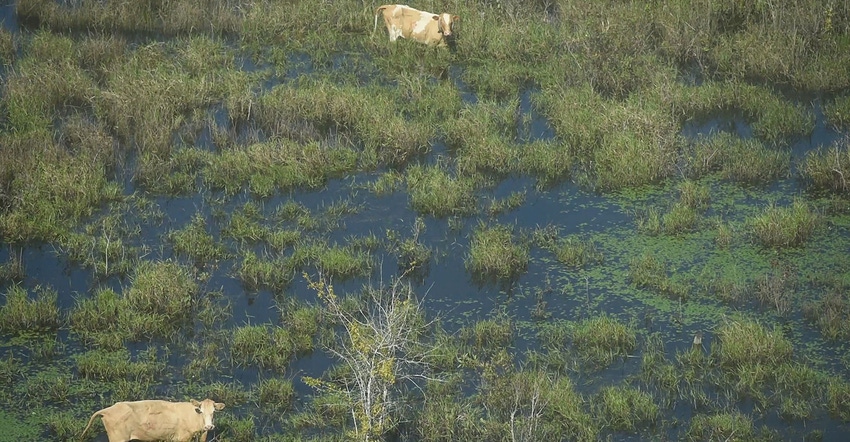Puerto Rico receives additional dairy assistance, and USDA targeting $4 million for California.

The U.S. Department of Agriculture has taken several steps in recent weeks and months to help individuals and communities cope with the aftermath of hurricanes Harvey, Irma and Maria, as well as the recent wildfires in northern California.
Agriculture Secretary Sonny Perdue noted that communities face a long, uphill battle on the road to recovery and pledged that USDA will do all it can to aid in that recovery.
“USDA remains steadfast in its mission to work on behalf of every community in Texas, Florida, Georgia, the Commonwealth of Puerto Rico and the U.S. Virgin Islands to ensure that life-sustaining resources are available to our neighbors as they begin the hard work of rebuilding their lives and communities following these devastating storms,” Perdue said earlier this month. “We are coordinating hour by hour and day by day with state and local governments, the private and nonprofit sectors, dozens of our federal sister agencies and, in some cases, key international partners to bring aid to everyone in need.”
In Texas and Florida, USDA's Animal & Plant Health Inspection Service (APHIS) pinpointed locations of stranded livestock in Texas and dropped feed for them while working with state officials to identify and re-patriate those that can be identified. In Florida, the agency played a key role in bringing a trainload of much-needed feed for dairy cows.
Additionally, APHIS facilitated coordination among non-government organizations interested in providing hay, feed and other products to support horses and livestock in Puerto Rico and the U.S. Virgin Islands. USDA also announced emergency assistance to dairy operators in Puerto Rico, with signups set to begin Oct. 21, 2017.
“We’re dispatching additional USDA staff to the island, but we also continue to ramp up material assistance as well,” Perdue said.
Hurricanes Irma and Maria devastated Puerto Rico’s agriculture sector, including dairy operations. Perdue said the Commodity Credit Corp. is providing up to $12 million to enable operators of Puerto Rico’s 253 licensed dairy operations to purchase feed for cattle. The special initiative, applicable only to Puerto Rico, is called the Dairy Assistance Program for Puerto Rico. The program will be administered by USDA's Farm Service Agency (FSA), which has offices and staff on the island.
“Dairy operations face additional losses unless they have feed for their remaining cattle,” Perdue said. “This funding will enable them to get the help they need until the situation in Puerto Rico stabilizes.”
Under the provisions of the announcement, dairy operators can apply to FSA to receive vouchers to purchase an estimated one-month supply of feed. The amount of the voucher is calculated based on 100% of estimated feed costs per cow for 30 days. There are an estimated 94,000 dairy cows on the island.
FSA will issue vouchers to licensed dairy applicants, who then may exchange the vouchers for feed at local dealers. If funding remains available at the end of the application period, FSA may provide assistance for additional feed or fuel purchases to further support these dairy operations.
Wildfire assistance
USDA is targeting $4 million to help farmers, ranchers and forest land owners in California recover from the recent wildfires. USDA’s Natural Resources Conservation Service (NRCS) will issue waivers for those interested in the Environmental Quality Incentives Program (EQIP) to enable recovery work to begin immediately.
NRCS will immediately begin accepting applications for its EQIP Catastrophic Fire Recovery fund pool to assist producers in covering the cost of certain rehabilitation practices, such as creating check dams in drainages, using damaged trees to slow runoff, repairing culvert systems and planting tree seedlings. NRCS is waiving the standard 30-day application ranking period and is accepting applications for this initial fund pool through Nov. 6, 2017.
“NRCS is committed to getting assistance out as soon as possible, and we are cutting some red tape to allow people to get to work immediately,” NRCS California acting state conservationist Curtis Tarver said. “We encourage producers to visit their local USDA service center to submit an application and work with staff to begin recovery.”
NRCS is also offering technical and educational assistance to fire-affected landowners faced with erosion and flooding in a damaged watershed. NRCS conservationists have expertise in erosion, hydrophobic soils and the use of measures (such as sand bags, mulching, etc.) to mitigate damage to the landscape.
NRCS, FSA and the Risk Management Agency in California are planning to meet with landowners, partners and other agencies to assess damages and discuss technical and financial assistance. Public workshops will be scheduled once the fires are contained.
"FSA has a number of programs to help wildfire-impacted producers get back on their feet,” said Jacque Johnson, acting California FSA executive director. “I want to encourage farmers and ranchers to contact their local FSA office to find out about resources available to them.”
About the Author(s)
You May Also Like



.png?width=300&auto=webp&quality=80&disable=upscale)

